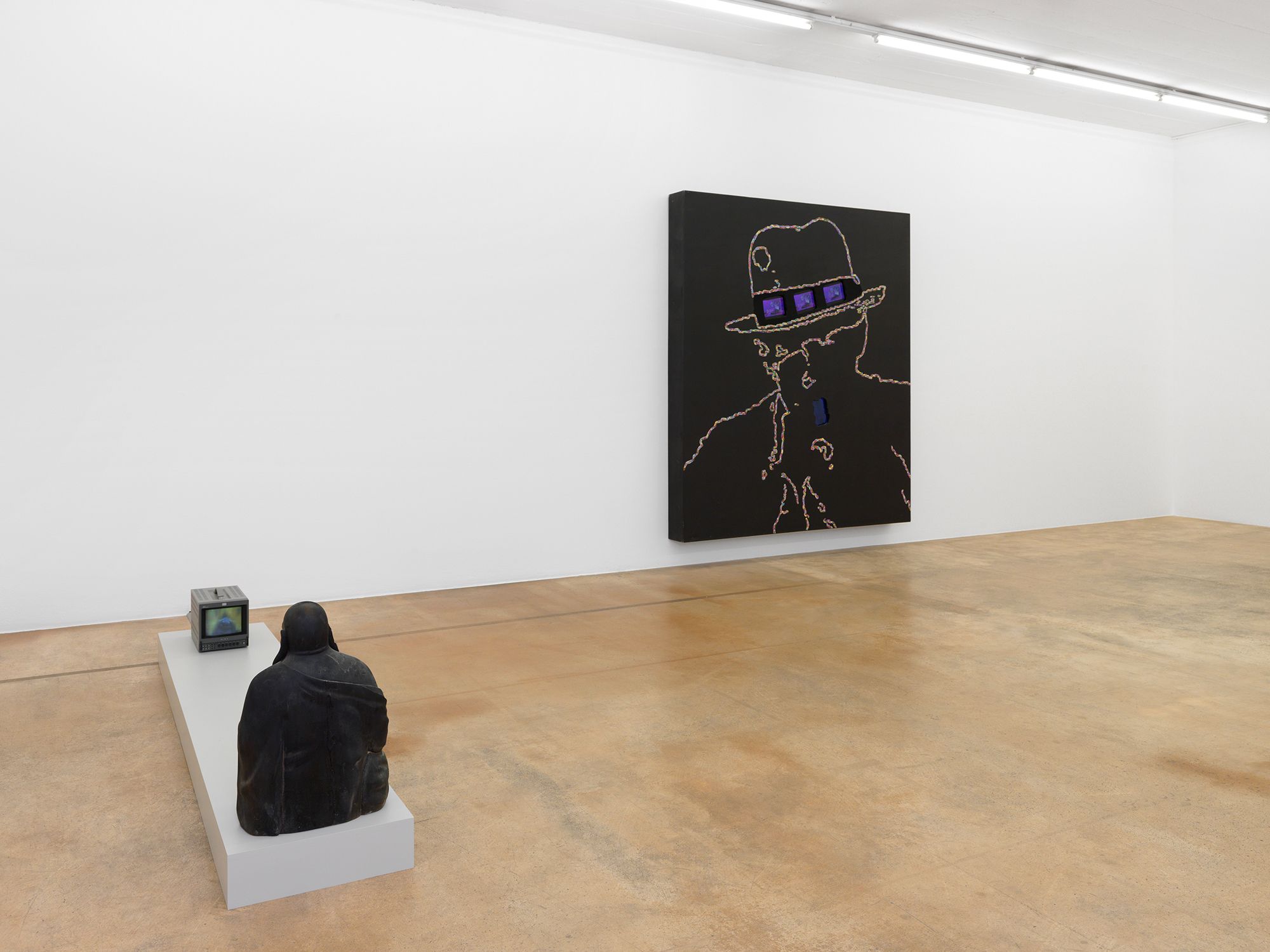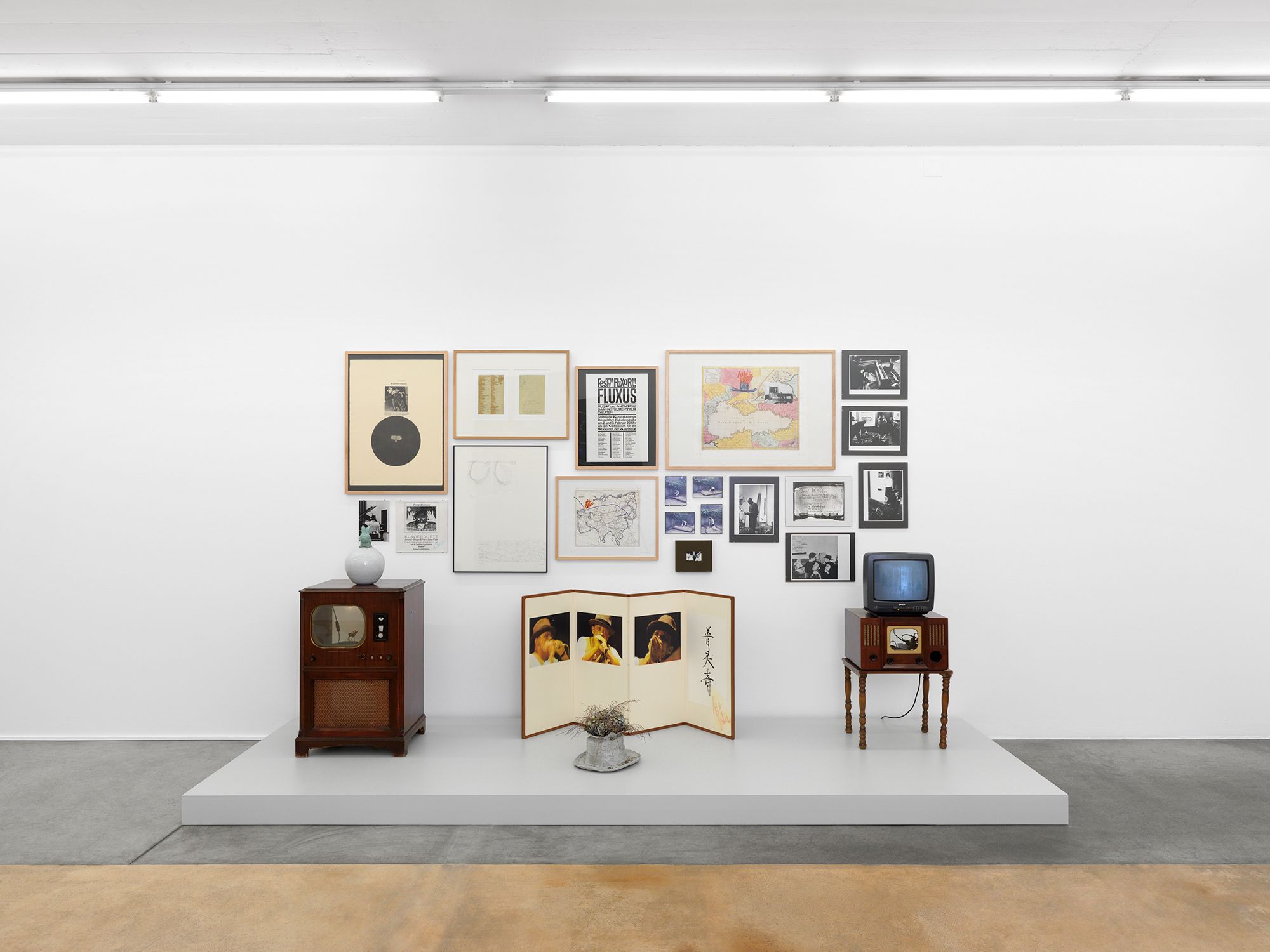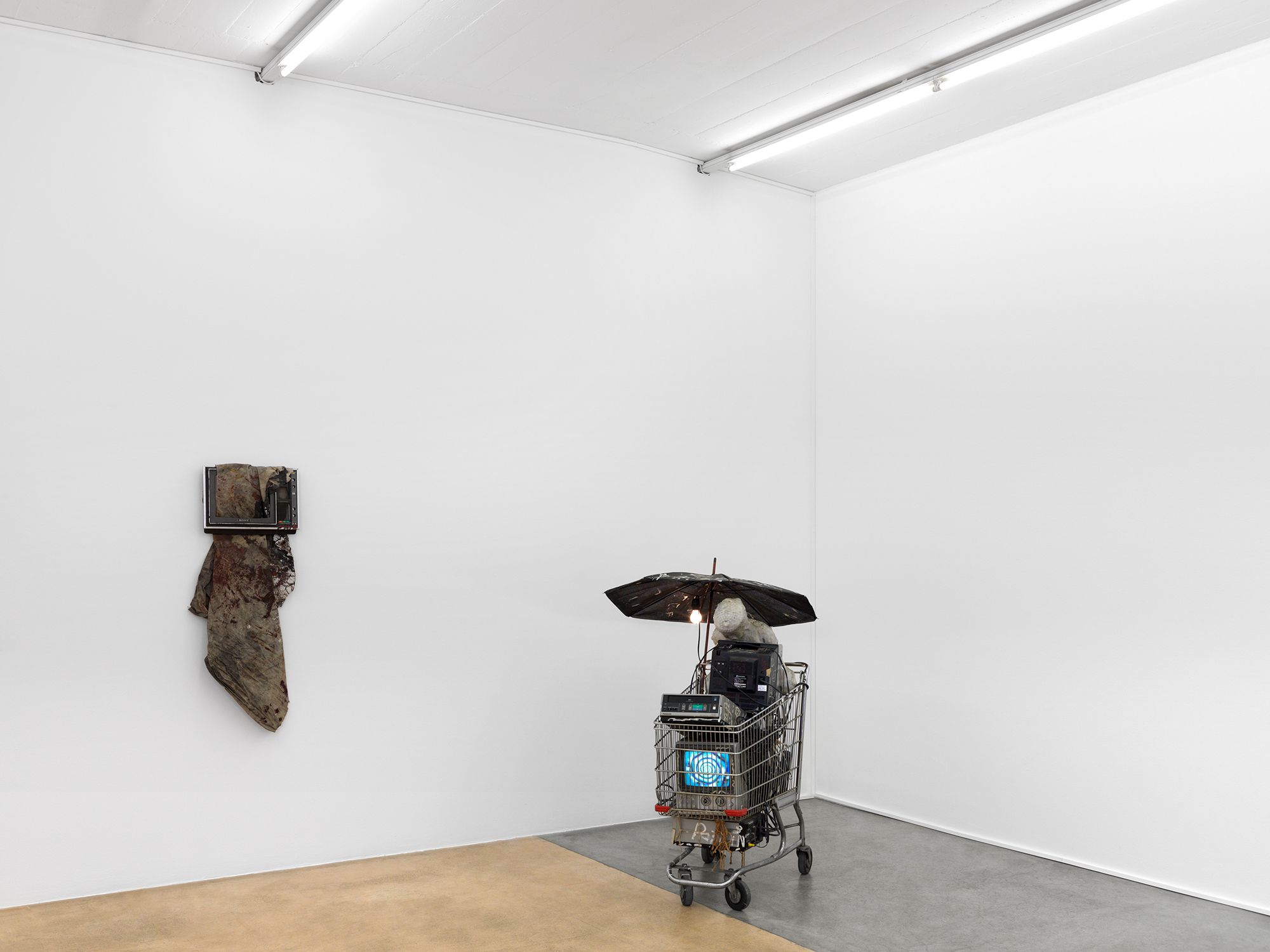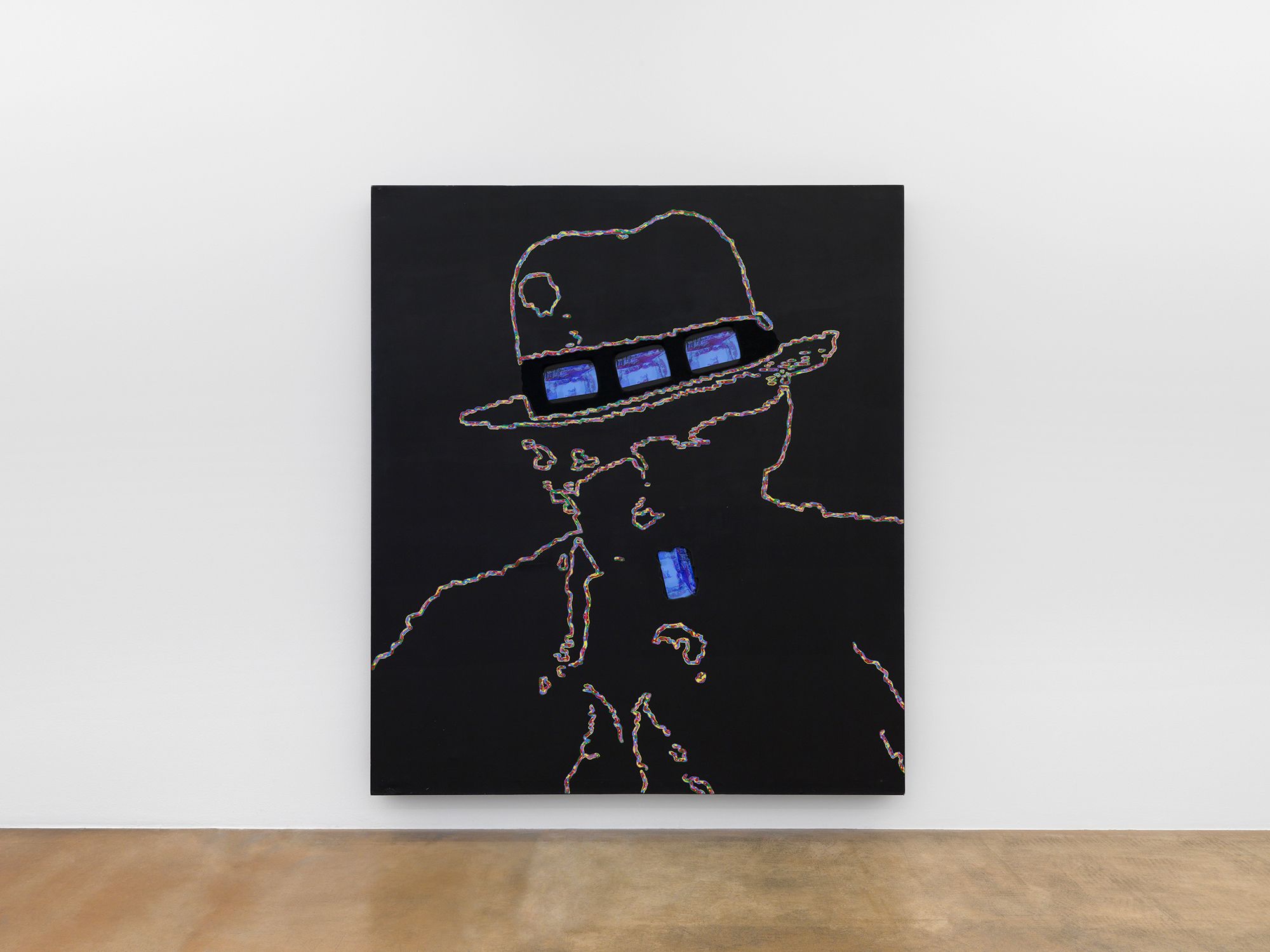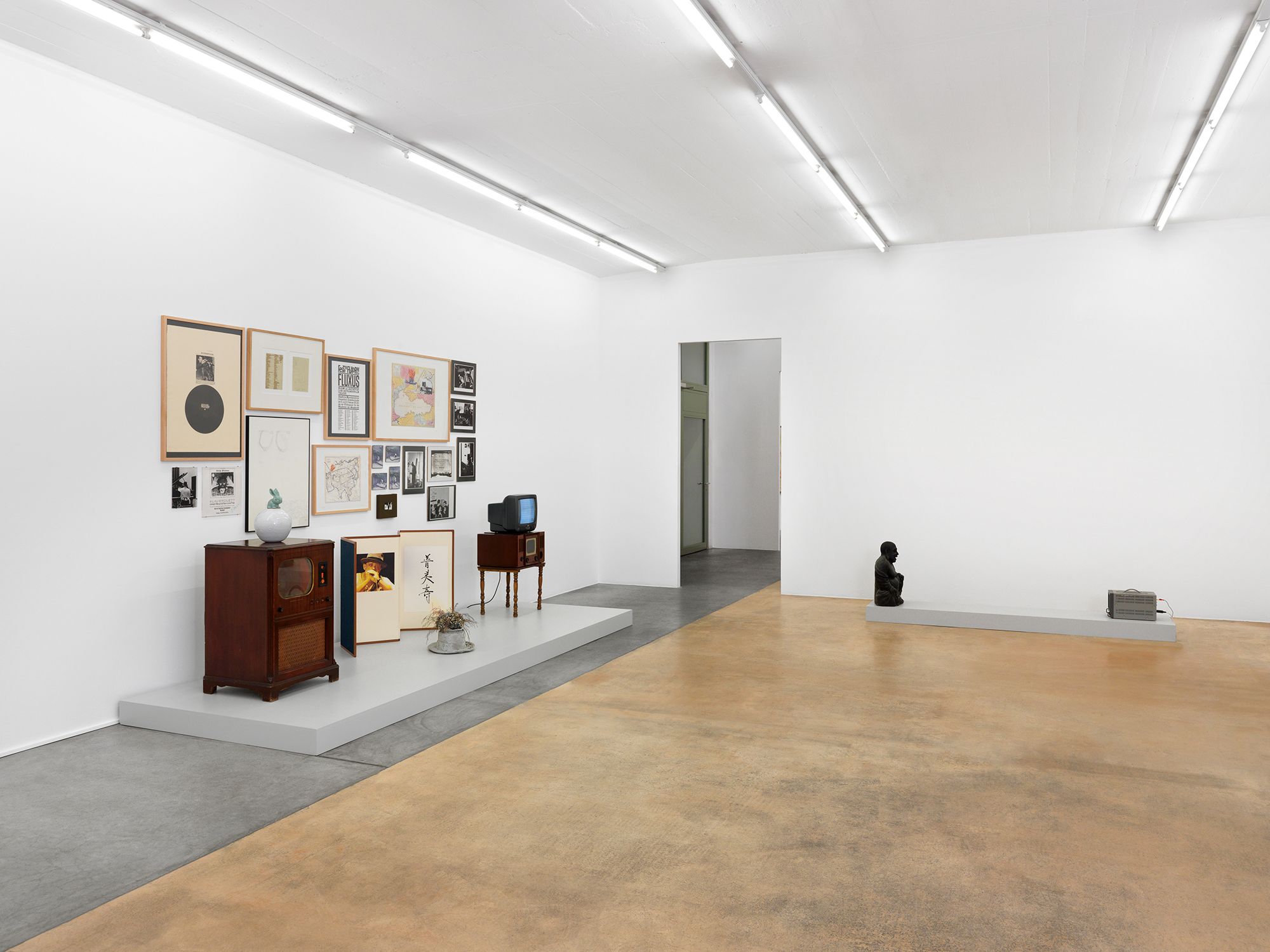Among the five works by Korean artist Nam June Paik (1932–2006) shown in this room, two directly refer to Joseph Beuys, the main figure of postwar German art.
Beuys and Paik met in Düsseldorf in 1961 and their friendship led them to collaborate on numerous occasions; the first one was 24 Stunden and took place in Wuppertal in 1965, and one of their last collaborations took place in Tokyo in 1984.
Beuys Vox (1961/1986) presents itself as a photo souvenir album covering the entire duration of their friendship. It is made up of thirteen works by Paik, four by Beuys and one by John Cage. Some of Paik’s works explicitly refer to Beuys (such as the concrete hat referring to the famous headgear Beuys used to wear at all times); other works translate directly the spirit of Fluxus, a movement they were both connected to. Other works rather belong to the documentation genre, such as the video cassette with a recording of Beuys’ installation Schmerzraum at gallery Konrad Fischer in Düsseldorf in 1984.
Nam June Paik—pioneer of video art, sometimes nicknamed the “Michelangelo of electronic art”—uses television both as a form in itself (he created numerous “video sculptures”) and as a tool to broadcast images. In T.V.BOYS/BEUYS (1988), it is both an element from the graphic world and a way to gather together an ancient and cross-historical form (the painting) and current images (the screen).
In Homeless Buddha (1989), a wax Buddha and a filmed Buddha echo each other, thus mixing, without any hierarchy, the digital image and the sculptural form. Paik started integrating the image of the Buddha in his work at the beginning of the 1970s through very diverse processes, the most famous being the TV Buddha series. It allows the artist to create a link between ancient history and a more contemporary version from modern technology—or rather a more current version as the use of a shopping trolley and the title of the work both explicitly refer to a current state of decay in advanced capitalist societies.
- Exhibition organized in honor of Marika Malacorda's Donation
